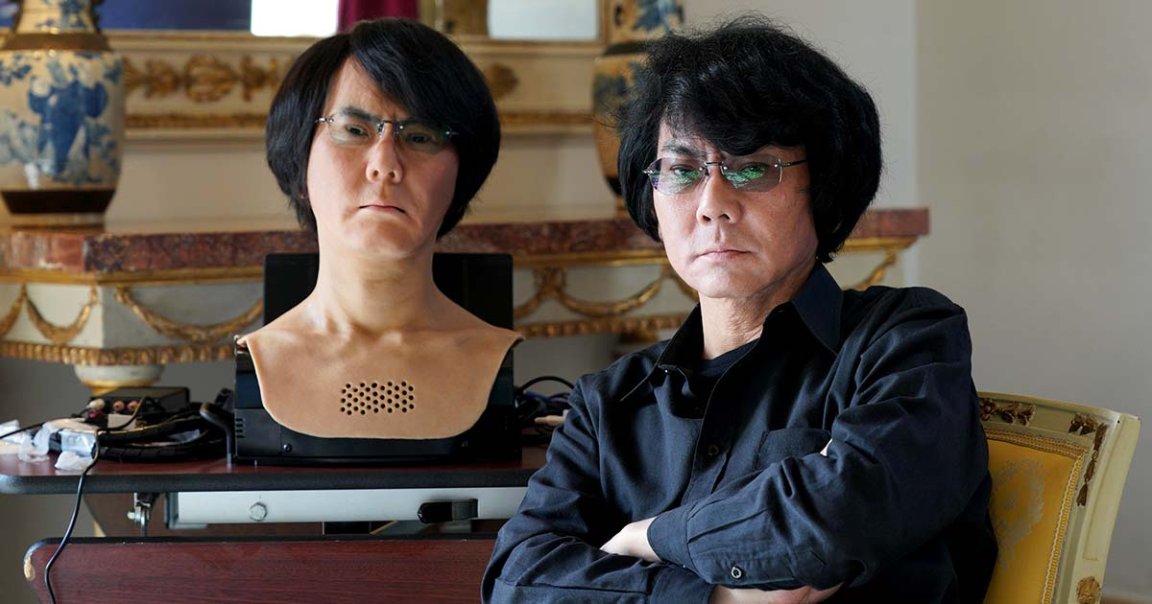
Human Xerox
Japanese inventor Hiroshi Ishiguro has created a whopping six robot clones of himself over the last 18 years, each bearing an increasingly close resemblance to himself.
His latest creation, dubbed Geminoid HI-6, is a life-like teleoperated android version of his physical likeness currently being displayed at his lab at Osaka University.
The bot, Ishiguro says, was designed to make his easier. In fact, it’s been taking over some of the tasks its flesh-and-blood creator doesn’t have the time for with the help of AI.
“The main feature of this version is it’s conversational,” he told CNBC in a recent interview. “We have integrated it with a large language model, and then we have input ten of my books and almost all media interviews.”
“Originally, I was using this robot for giving lectures when I was busy,” he added. “But now, after the lectures, this Geminoid HI-6 can answer the questions given by an audience.”

Android Surrogate
The eerie robot can also copy Ishiguro’s facial expressions.
“The skin is made from silicone,” he told CNBC. “The feeling is very close to real human skin.”
Ishiguro’s creation isn’t able to walk just yet, but he hopes to give it a “biped mechanism” in the “near future.”
Geminoid HI-6’s voice also isn’t exactly a carbon copy, sounding more like a generic male adult with an unusual — and definitely not Ishiguro’s — accent.
Nonetheless, making the robot appear as life-like as possible is Ishiguro’s main task, because he and his colleagues are pursuing a future where interacting with a humanoid robot becomes commonplace.
For instance, Ishiguro showed off a front desk android receptionist called “Erica,” which can be remotely controlled or interact with visitors autonomously.
“If we expect to have better relationships with a robot, it’s quite important to feel intimacy to the robot, to accept the robot as our social member,” he told CNBC.
More on humanoid robots: Tesla Caught Using a Lazy Video Editing Trick to Make Its “Autonomous” Robots Look More Capable